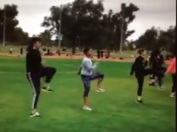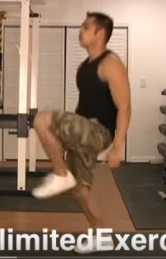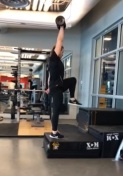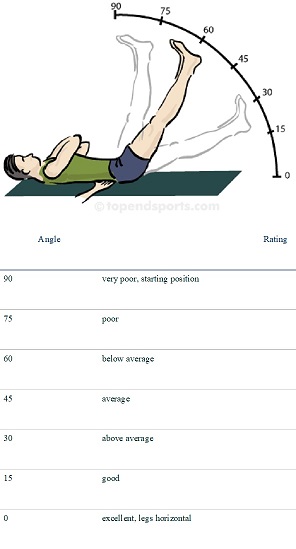Lumbo-Pelvic Control and Running Drills
I recently tweeted a video of Sally Pearson doing a “high knee” drill and suggested that this was a good model for team sports athletes to use as a general guide. Using Dan Pfaff’s term “bandwidth” I think there is a model that intermittent team sports should aim at. The tweet is below.
https://twitter.com/LorisBertolacci/status/1233255452307181569

The explosion of drills emphasizing front-side mechanics means we often see videos of athletes doing contrived “front-side” drills. I also mentioned the lumbo-pelvic area. From what I understand this controls the extremities in a 3 D fashion . We know the pelvis has to move 3D when running but again using the term bandwidth it also has to be an anchor for huge forces to be transmitted through. I could write a book about running drills and another on the lumbo-pelvic area so will keep this article short as possible.
On You Tube we can find lots of nice drills now emphasizing front-side or just run drills. First one is complex and is done well in video. But I assume this requires lots of strength and also skill. Question is will doing it develop strength or will a beginner just do it by flipping the pelvis around?

The second video is an excellent progression of drills and again seems well done by athletes in video ( ie: control pelvis). But we have all seen athletes lean way back as complexity increases to facilitate hip flexion.
Progression of Sprint Drills to enhance frontside mechanics

How often have we seen high knees done like the video below in warm-ups. I remember a Volleyball Junior TID camp and they nearly all did this when I said high knees! I thought apart from raising body temperature what poor form for the in-close needs of Volleyball.

Where it can get really unspecific is when we move to a lot of the front-side drills that involve complex movements, boxes, bars and dumbells. Again pretty good in this video below but I would think this needs a pretty well conditioned athlete with good basic skills in run drills and movement in general. And if we go to an AFL club for example we will still find players who can do this but in reality just compensate again to allow the movements or facilitate hip flexion.
Single leg DB Snatch to Box with Knee Drive

The problem many coaches have in team sports is that they train large groups and do not have the luxury of individualizing. The issue is making the session interesting and the drills varied enough but also sticking to the basics or creating scenarios and constraints to help develop the basics. Dribbling over ankles and calves (modified high knees), mini hurdles, stairs whatever. Whilst speed ladder is not popular with many, some fast foot drills are of benefit with beginners if arms are coordinated and basic postures maintained. I think wall drills can be used with large groups but not for too many reps. This topic alone requires a lot of discussion.
When individualizing though it becomes critical to analyze how an athlete runs, then what their drills look like, how strong are they in general and what lumbo-pelvic issues and range of motion do they have. Also how do they look in a game and are they fit!
One assessment that I believe is valuable is the double leg lowering test. Below are some links. The test can also be done manually with a hand under the lower back and assessing when abs/back can no longer maintain pressure on hand and thus control pelvis.
VID: Double leg lowering abdominal test
Double leg lowering test: Article
https://www.topendsports.com/testing/tests/abdominal-strength.htm

The ability to control the pelvic or fancy word (lumbo-pelvic) can and should be assessed by many means. Sorensens test ( holding a back extension), side oblique holds, single leg hamstring holds and so on. The problem or weakness could be multifaceted. Stuart McGill has some excellent tests and data which in my opinion combined with the double leg lowering test will provide some ok indicators to drive what ‘core” work athletes need or to explain why things are breaking down in running drills relative to this article. But for runners I think wise to add the leg lowering test because the McGill tests do not seem to address the impact of leg levers on pelvic and lumbo_pelvic area.


Personally I have found an inability to perform well on this test usually co-incides with an inability to hold postures in areas like sprint drills. (just like an inability to do single leg swiss ball hamstring curls!).
There are regressions and progressions to this assessment galore. Below are some excellent links
https://thebarbellphysio.com/core-movement-every-fitness-athlete-needs-master-optimal-performance/
Dead Bug Progressions: Prehab Guys
https://theprehabguys.com/advanced-core-exercises/
So what do elite athletes do for lumbo pelvic stability. Hardcore S&C people will say squats and deadlifts and overhead lifts will stimulate the “core” and enough. Others do heaps of offset walks with dumbells and some pallof presses. Many elite athletics coaches keep it pretty basic and work all angles with all types of ab exercises, hanging knee raises, lower back work and medicine ball work. Here is Sally Pearson doing some good old fashioned med ball work.
Sally Pearson Medicine Ball Ab Training
But I am sure that if I tested her for double leg lowering strength she would get a good result. Experienced , successful and astute coaches know how to condition athletes in the lumbo pelvic area and intuitively know when the link from run to drill to conditioning is missing and how to fix issues. Many young “INSTAGRAM” coaches do random fancy shit.
But take home at individual level some assessments have to be done, and then tied in with what is seen on field in runs/drills/jumps etc and under fatigue.
This area is massive! The research on injury prevention in soft tissues (hamstrings) is exploding. We have moved from eccentric needs to now hearing the word running technique and “lumbo-pelvic” being spoken about. The moment you speak about anything in isolation though forget it.
Getting back to my video on twitter with Sally Pearson and running mechanics for team sports athletes. With big groups KISS method and stuff like short hills/hurdles/light sleds/walls etc can create constraints that develop OK technique and postures. ‘Core” routines for big groups should be aimed at the middle levels. “Do no harm” but get some stabilization going. At individual levels for coaches tease out what is the issue. But also do some assessments such as the double leg lowering test or sorensens tests and see what they can cope with.
Visually I use content such as in video below because it seems to reinforce good posture and basic skills.
Fast Leg or “dead leg” Run Drills
As I said this topic is one that needs a book or more research than has been done on the nordic exercise!
Podcast 4: Physical Development in an Under 18 Australian Rules Football Club
Very informative Podcast with Calder Cannons High Performance Manager, Sean Potter on development in the Under 18 Australian Rules Football Club system.
Podcast Link: Physical Development in an Under 18 Australian Rules Football Club
We chat about topics such as maturation and peak height velocity and how it affects selection. I have added a link below to calculate a growth spurt or “Prediction of Age of Peak Height Velocity”
Link: Peak Height Velocity Calculation (or growth spurt!)
We discuss AFL draft age given players are in their final school year. Below is a 2017 Age Article on raising the AFL Draft Age. My opinion is it is too young given copied from the US system where nearly all players are drafted after college.
Link: Age article on raising AFL Draft Age
Sean provides advice for parents on how to develop their children if motivated to get into the TAC system and ultimately the AFL system given the pathway starts at Under 15. He emphasised the need to source good coaches for skills, run technique and S&C. Ranall Hobson has an excellent resource for parents and coaches online.
Link: Ranall Hobson: Excellent resource for parents for run technique.
We also chat about issues with private schools and public schools and how it impacts development. Age article below discussing this aspect.
Age Article “How private schools have taken over the AFL”
Sean also provides an overview of the Calder Cannons program. Most players are drafted from these clubs into the AFL or go to the VFL and other similar competitions so it is a critical stage of development and staff such as Sean have an enormous job to do with little financial reward. There is a lot of dicussion now about job prospects with S&C and Sports Science given explosion of graduates.
The future development pathway of strength and conditioning: a proposed model from the UKSCA
It is a fantastic environment to take the next step into strength and conditioning in the AFL. But given the responsibility the job has, plus the spotlight on the AFL draft every year, more resources should be directed at experts like Sean to make it a full time position and thus optimize development of players.
Episode 1: Fitness in Australian Rules Football. Weekly comments.
Thought I would chat about Bodyfat in the AFL and also issues with players getting injured in non AFL training activities. Short commentaries on fitness issues in Australian Rules Football.One good thing about Aussie Rules is that it involves skill, speed, endurance, strength plus uses sports science and fitness dogma so a good vehicle to chat about fitness and sport.These will be approx 10 minute chats versus normal podcasts I will do with guests.
Podcast. Episode 1. Weekly comments Australian Rules Football Fitness
Mitch McGovern and Charlie Curnow were in the media this week in the AFL, one for losing weight and getting fitter and the other with Kane Cornes criticising him for being irresponsible with off season non training related injuries. I discuss these topics.Bodyfat is calculated by a number of methods in the AFL. One is skinfolds and usually this is 7 pinches and then a sum. We see a range from 30mm total to 60mm in the AFL and the average is probably just under 50mm. Players are leaner in the modern era. The other method is a DEXA scan and this also provides information on muscle mass in different areas and a % bodyfat. Again quite a range in the AFL but anything to far above 12% is frowned upon. There is usually scope within an AFL program to individualize bodyfats and weights depending on individual player genetics and needs. The only issue with “FAT CLUBS” can sometimes be promoting eating disorders and mental health issues. I believe this is quite an issue because males put on a brave face but body image can cause lots of stress. Some players will resort to under eating and this can cause muscle loss and also issues with the immune system. I discuss the SETPOINT theory where there is some evidence for individuals tend to gravitate towards a certain bodyfat and bodyweight. Thus common sense and performance variables should also be factored in. Does the player run well, jump well at a certain bodyfat and eating pattern? So quite a complex issue and requires a team effort approach from dietician to fitness guru to player to get optimum results.
The other topic is how RISK AVERSE does an AFL club get? Obviously skiing in winter would be frowned upon! But Kane Cornes raps Charlie Curnow having a fun game of Basketball with mates and hurting knee? Tough one but reality is we cannot be around 24/7 with players in their social lives. And does a player not play some hoops with his little cousins in the backyard or backyard cricket or soccer on the sand at the beach? Where a player goes out socially, drinks too much and hurts themselves. Agree there should be consequences.But for example in the XMAS break. What does a player do? Run in a straight line? In fact gut feel playing basketball in the off-season could be the very thing some players need rather than clock junk miles. Common sense has to prevail. Obviously clubs will want to know the circumstances surrounding an injury incurred out of training, IE alcohol related or plain stupidity. But bad luck does occur and we are dealing with athletes who express themselves physically.
PODCAST 3: Fitness needs at a local Australian Rules Football Club with Paul Bacash
In this podcast I am chatting with Paul Bacash who is the fitness adviser of the West Preston Lakeside Roosters AFL team in the NFL
PODCAST LINK: Fitness needs at a local Australian Rules Football Club
Paul is holding the cup on right hand side of 2nd pic.

Most of the debate is around elite teams in the AFL and AFLW. Yet the majority of Australian Rules Football is played below that level. VFL/NEAFL/QAFL/Under 18/Juniors/Schools etc. Yet most graduates come out of University only reading research about how elite teams train and do not grapple with how to input best practice and current research into a SUB ELITE scenario with big numbers. How do you manage a large group? Communicate? What are the “BIG ROCKS” that will give you major bang for buck in preparing at this level and also for long term development?
Important takeaways here regarding the realities of how to optimally prepare a team at semi pro level. This is where managing large groups, communication and coaching are skills just as important , if not more, than sports science skills. Paul is qualified both as a physical education teacher and masseur and has wide experience in Aussie Rules. This podcast is a must listen for budding exercise science graduates and even Masters graduates to listen to. This team has won the last 2 premierships and what Paul said simply resonated with me. He blends knowledge with passion, hard work and attention to detail rather than talk through a GPS unit. He knows the BIG ROCKS because of this experience and thus prioritises training needs.
Certainly they start training early in the prexmas block which surprised me. But that locks in with the whole chronic load theory. He also emphasised the need to take care of rehabilitation needs in this period so a very professional approach. From fitness testing perspective he simply uses a run around an adjacent lake running track and simply given the numbers he deals with does not burden himself withe too much data which may be incorrect as he explains. They have an athletics track next to them plus a track around Edwardes Lake is in Pic. So this is the test!

With sports science he would love to use GPS but again given numbers and logistics just uses some basic RPE data. Again he does not do complex assessments of RPE data rather takes a few players and works forward. Novel approach. He wants to know what is happening short term and predict the next few weeks.
He does incorporate lots of injury prevention work either in the warm up or after training. Weight training is set up vie online advice and as much as possible is specific to players needs.
Speed is a priority after Xmas given they start just before Australia Day in late Jan and then have a 6 week block before the first practice match. What was really interesting again is that he does not get too fancy with speed given numbers and needs. Some straight line maximal work weekly and the agility/change of direction work is obtained from the specific AFL drills. Again priorities versus getting too fancy without much bang for buck.
He uses Nordics and slowly doses them over the preseason.
Running is done before or after the Skills and is determined by what load and intensity the Skill drills were.
So this is really worth a listen given many budding High Performance Managers simply struggle to understand how to make the “BIG ROCKS” of training a priority and manage and communicate with a large group.